
More than 1,000 mummy portraits, painted on wood panels or cloth shrouds between the first and third centuries a.d., are in museums today. In the late nineteenth and twentieth centuries, archaeologists unearthed scores of these portraits, primarily at cemeteries in and around the Fayum region of Lower Egypt. Excavators often removed the panels or shrouds from the mummies, discarded the bodies, and sold the portraits to institutions throughout Europe, the United Kingdom, and the United States. As a result, scholars have almost exclusively studied the portraits as works of art divorced from their archaeological and funerary contexts. They have focused their efforts on researching stylistic elements and establishing the identities and ethnicities of the deceased, whose names and biographies rarely survive. Few researchers have investigated how the paintings were made.
Nearly a decade ago, J. Paul Getty Museum antiquities conservator Marie Svoboda launched a project that would use materials science to study mummy portraits in collections around the world. “Because the panels are so well preserved, there is so much evidence of materials still present on them,” says Svoboda. “I’m interested in understanding the portraits in terms of ancient working practices.” To date, she has enlisted colleagues from 49 international institutions to collaborate on a project called APPEAR (Ancient Panel Paintings: Examination, Analysis, and Research).
A painting of a woman on lime wood is one of the mummy portraits being studied by researchers using special camera filters under different light wavelengths (left to right: visible, ultraviolet, and infrared) to identify pigments and binding agents.
Esta historia es de la edición January/February 2022 de Archaeology.
Comience su prueba gratuita de Magzter GOLD de 7 días para acceder a miles de historias premium seleccionadas y a más de 9,000 revistas y periódicos.
Ya eres suscriptor ? Conectar
Esta historia es de la edición January/February 2022 de Archaeology.
Comience su prueba gratuita de Magzter GOLD de 7 días para acceder a miles de historias premium seleccionadas y a más de 9,000 revistas y periódicos.
Ya eres suscriptor? Conectar

ORIGINS OF PERUVIAN RELIGION
While investigating looters' holes at the site of La Otra Banda in northern Peru's Zaña Valley, archaeologist Luis A. Muro Ynoñán of the Field Museum and the Pontifical Catholic University of Peru spotted carved blocks around seven feet below the surface.
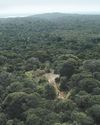
ISLAND OF FREEDOM
Many of the enslaved Africans sent to Brazil beginning in 1549 were from what is now Angola, where one of the most widely spoken languages was Kimbundu.
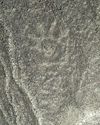
NAZCA GHOST GLYPHS
From the 1940s to the early 2000s, geoglyphs were discovered in the Nazca Desert of southern Peru depicting animals, humans, and other figures at the rate of 1.5 per year.

COLONIAL COMPANIONS
The ancestry of dogs in seventeenth-century Jamestown offers a window into social dynamics between Indigenous people and early colonists.
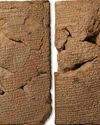
BAD MOON RISING
The British Museum houses around 130,000 clay tablets from ancient Mesopotamia written in cuneiform script between 3200 B.C. and the first century A.D.
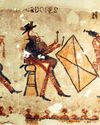
DANCING DAYS OF THE MAYA
In the mountains of Guatemala, murals depict elaborate performances combining Catholic and Indigenous traditions
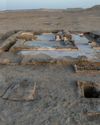
LOST GREEK TRAGEDIES REVIVED
How a scholar discovered passages from a great Athenian playwright on a discarded papyrus

Medieval England's Coveted Cargo
Archaeologists dive on a ship laden with marble bound for the kingdom's grandest cathedrals
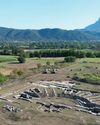
Unearthing a Forgotten Roman Town
A stretch of Italian farmland concealed one of the small cities that powered the empire
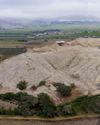
TOP 10 DISCOVERIES OF 2024
ARCHAEOLOGY magazine reveals the year's most exciting finds